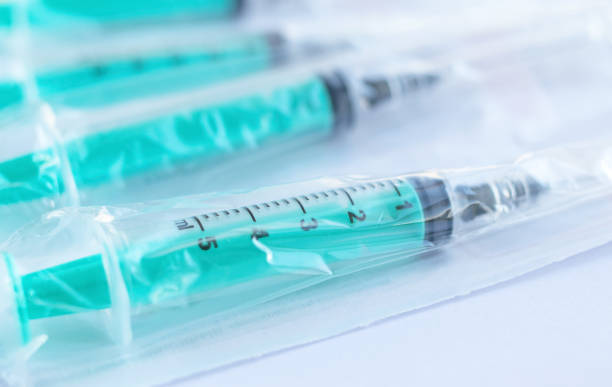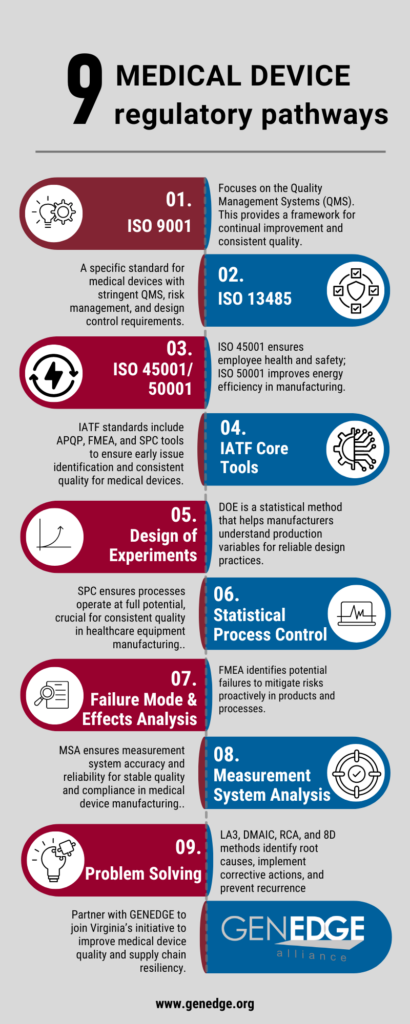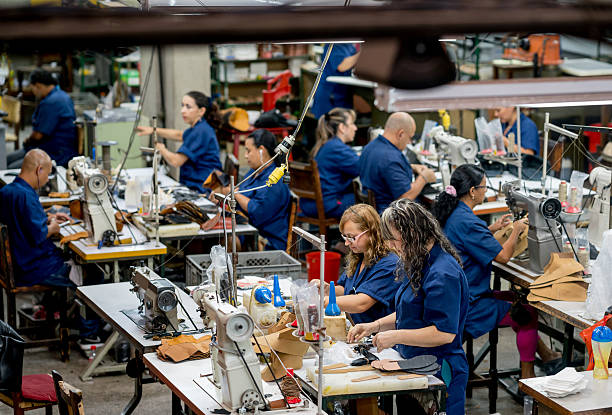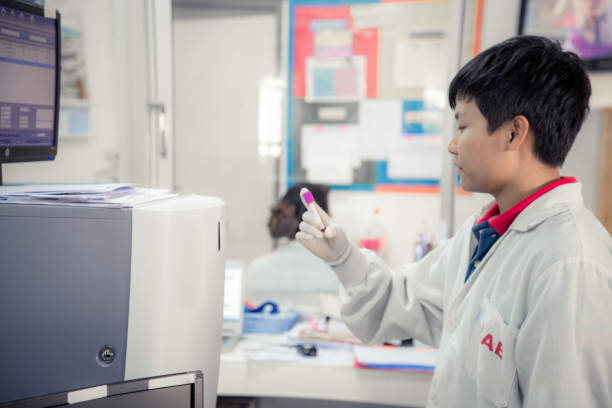America might be the biggest spender on healthcare per person of any industrialized country in the world. In 2022, U.S. healthcare spending reached $4.5 trillion, which averages $13,493 per person. By comparison, the average cost of healthcare per person in other wealthy countries is less than half as much.
Virginia’s annual expenditures reached $83.5 billion in 2022, an increase of 6.3%, and it still ranks among the top 20 highest-spending states in the country. When we put things into perspective, that’s more than six times the amount of a small country like Timor-Leste (also known as East Timor), which only sacrificed a mere 1.5% of its GDP to healthcare in 2022.
With perseverance, talent, and altruism driving breakthrough innovations in the medical field (as they have for a long time), Virginian healthcare manufacturers have put their money where their mouth is. From phenomenal discoveries during wartime like the WWI Thomas splint to today’s Industry 4.0 advancements, medical innovation is marked by big milestones. But how does quality assurance play a part?

In this blog, we dissect:
- What quality assurance is, and why it’s important
- Different medical device manufacturing regulations to know
- How Virginian manufacturers are innovating and staying compliant today
Why Quality Assurance is Important to Healthcare Equipment Manufacturing
Quality assurance (QA) in healthcare equipment manufacturing is important because it guarantees every product meets rigorous safety and performance standards. Unlike other industries, medical devices directly affect patient health, meaning the stakes are exceptionally high.
Regulatory bodies like the FDA and ISO provide complete guidelines that help manufacturers produce reliable and safe devices. QA professionals follow these guidelines closely, examining every manufacturing process step from initial design to final production.
QA is also vital for continuous process improvement. Techniques like the Deming Cycle (Plan-Do-Study-Act) enable QA teams to refine processes constantly through thorough testing and analysis. This helps ensure that any flaws are detected early and resolved ASAP, lowering the chance of defects in the final product.
The hyper-focus on process improvement extends to staff training, tool selection, and detailed process definitions, all aimed at maintaining high-quality standards. Internal audits, regular inspections, and strict adherence to regulatory guidelines keep medical device integrity at an all-time high, protecting patients and everyone involved.
It even extends to sales — healthcare equipment manufacturing CPQ (Configure-Price-Quote) software streamlines the sales process by allowing sales teams to easily configure complex medical devices and generate accurate quotes.
Medical Device Regulatory Pathways
In the state of Virginia, several quality assurance regulations govern manufacturing quality systems:
ISO 9001
ISO 9001 focuses on the quality management systems (QMS) that organizations must have in place to meet customer and regulatory requirements. This standard provides a framework for continual improvement and consistent product quality.
ISO 13485
ISO 13485 is a specific standard for the medical device industry. It includes stringent requirements for QMS to consistently meet customer and regulatory purposes, focusing on risk management and design control activities during product development.
ISO 45001/50001
ISO 45001 deals with occupational health and safety management systems for an employee-friendly working environment. ISO 50001 focuses on energy management systems to improve energy efficiency and lower energy consumption in manufacturing processes.
IATF Core Tools
Core tools like Advanced Product Quality Planning (APQP), Failure Mode and Effects Analysis (FMEA), and Statistical Process Control (SPC) are part of IATF standards. These tools help identify potential issues early, control processes, and maintain the consistent quality of the medical devices produced.
Design of Experiments (DOE)
DOE is a statistical method used in product design and development stages. It helps manufacturers understand the variables affecting the production process for stronger and more reliable design practices.
Statistical Process Control (SPC)
SPC uses statistical methods to monitor and control a process so it operates at its full potential. This means everything in maintaining consistent quality in healthcare equipment manufacturing.
Failure Mode and Effects Analysis (FMEA)
FMEA is a proactive approach used to identify potential failure modes of a product or process and their impacts. This helps in taking necessary actions to mitigate risks before they occur.
Measurement System Analysis (MSA)
MSA evaluates the accuracy and precision of measurement systems used in the manufacturing process. A reliable measurement system keeps the quality and compliance of medical devices stable.
Problem Solving (A3, DMAIC, RCA, 8D)
Problem-solving techniques like A3, DMAIC (Define, Measure, Analyze, Improve, Control), Root Cause Analysis (RCA), and the Eight Disciplines (8D) method help identify root causes, implement corrective actions, and prevent recurrence.
How is Virginia Keeping Up?
They’re building better technology.
Tympanogen, Inc., a pioneering company formed by engineers and physicians, developed Perf-Fix™, a product that transforms tympanoplasty into a non-invasive office procedure.
Facing the need for specialized testing to gain 510(k) Premarket FDA approval, Tympanogen turned to GENEDGE. GENEDGE connected them with NASA Langley Research Center, which possessed the necessary rheometers for testing their Class 2 device. This partnership enabled Tympanogen to move forward with its innovative technology and stay compliant.

They’re using digital manufacturing to deliver better veteran care.
The Department of Veterans Affairs (VA) is revolutionizing healthcare for veterans by adopting digital manufacturing technologies. As Dr. Beth Ripley from the VA’s Office of Healthcare Innovation and Learning highlighted, digital manufacturing, such as 3D printing, makes it possible to create customized medical devices no matter where patients are located.
For example, veterans can now quickly receive tailor-made hand braces crafted by leading clinicians within the network, significantly enhancing access to high-quality care and slashing wait times. This tech-forward initiative also addresses supply chain disruptions, which became acutely problematic during the COVID-19 pandemic, by enabling the on-demand production of critical medical supplies.
They’re strategically partnering with GENEDGE.
GENEDGE is actively boosting medical compliance and device quality through its involvement in forming the Best Practices in Supply Chain Resiliency and Quality Working Group and its advanced manufacturing consulting. This collaboration brings together experts from the medical device industry, government bodies, and several industry associations.
The aim is to improve the medical device supply chain by implementing MedAccred across various supply chain tiers, identifying outstanding quality assurance practices, and reducing risks. These efforts are expected to elevate patient safety and device reliability, in line with the U.S. FDA’s Case for Quality Initiative.
Also, GENEDGE offers support for companies seeking MedAccred accreditation through the MedMMAP program. This program guides medical manufacturers through pathways designed to meet stringent MedAccred standards so they achieve and maintain high levels of quality and compliance necessary for medical device production.
Don’t miss the opportunity to enhance your knowledge and network. Partner with GENEDGE to join Virginia’s initiative to improve medical device quality and supply chain resiliency. For more information, get a free assessment.



